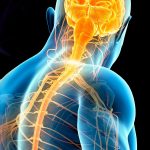“Exercise-in-a-pill” boosts athletic endurance by 70 percent
Every week, there seems to be another story about the health benefits of running. That’s great—but what if you can’t run? For the elderly, obese or otherwise mobility-limited, the rewards of aerobic exercise have long been out of reach. Co–senior authors Ronald Evans and Michael Downes, together with first author Weiwei Fan and colleagues, have built on earlier work by the lab that identified a gene pathway (PPARD) triggered by running. In the current study, which appeared in Cell Metabolism on May 2, 2017, the team reported fully activating that pathway in sedentary mice with a chemical compound, mimicking the beneficial effects of exercise. They also found that PPARD encourages fat-burning but suppresses sugar-burning in muscles during exercise, likely to preserve sugar for use by the brain. The work reveals why runners who “hit the wall” experience both physical and mental exhaustion upon using up their ready supply of glucose.
Featured Stories
 Untangling the mysteries of the spinal cordConverging research and innovative technologies are tackling some of the deadliest motor diseases.
Untangling the mysteries of the spinal cordConverging research and innovative technologies are tackling some of the deadliest motor diseases. An interview with Diana HargreavesInside Salk talked with Hargreaves about why she prefers smaller intellectual environments, what excites her about the science she does at the Institute, and how she thinks about being a woman in science.
An interview with Diana HargreavesInside Salk talked with Hargreaves about why she prefers smaller intellectual environments, what excites her about the science she does at the Institute, and how she thinks about being a woman in science. Delving into the best of both worlds with Shani SternAs the only electrophysiologist in the lab, Stern uses her engineering expertise to delve into the biological mysteries that most intrigue her, particularly bipolar disorder.
Delving into the best of both worlds with Shani SternAs the only electrophysiologist in the lab, Stern uses her engineering expertise to delve into the biological mysteries that most intrigue her, particularly bipolar disorder.




















































